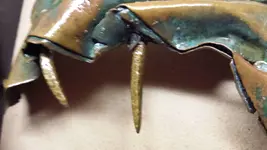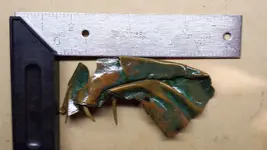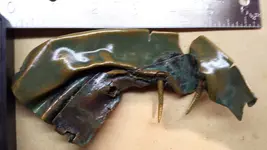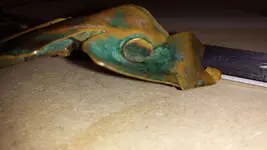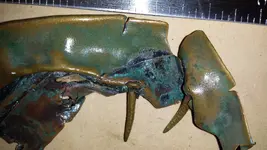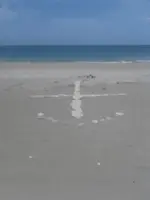ruhrt2
Tenderfoot
- Joined
- Feb 17, 2014
- Messages
- 5
- Reaction score
- 3
- Golden Thread
- 0
- Location
- Bradenton, FL
- Detector(s) used
- Minelabs GPX 5000 and others
- Primary Interest:
- Beach & Shallow Water Hunting
- #1
Thread Owner
Metal detecting on the beach around Ft Pierce, FL opposite one of the 1715 Plate Fleet wrecks I came across this piece of copper with two (what appears to be) hand forged square brass nails. Being brass, I assume this dates the item as being after 1715 around the time of Muntz metal.
I was a Coast Guard Marine Inspector for 14 years and inspected many many wood hulled boats plus some square riggers and have never seen nails such as these.
Does anyone have a clue as to a better age for this item?
I am assuming it is part of a ship bottom copper sheeting of late 1800's.
I was a Coast Guard Marine Inspector for 14 years and inspected many many wood hulled boats plus some square riggers and have never seen nails such as these.
Does anyone have a clue as to a better age for this item?
I am assuming it is part of a ship bottom copper sheeting of late 1800's.



